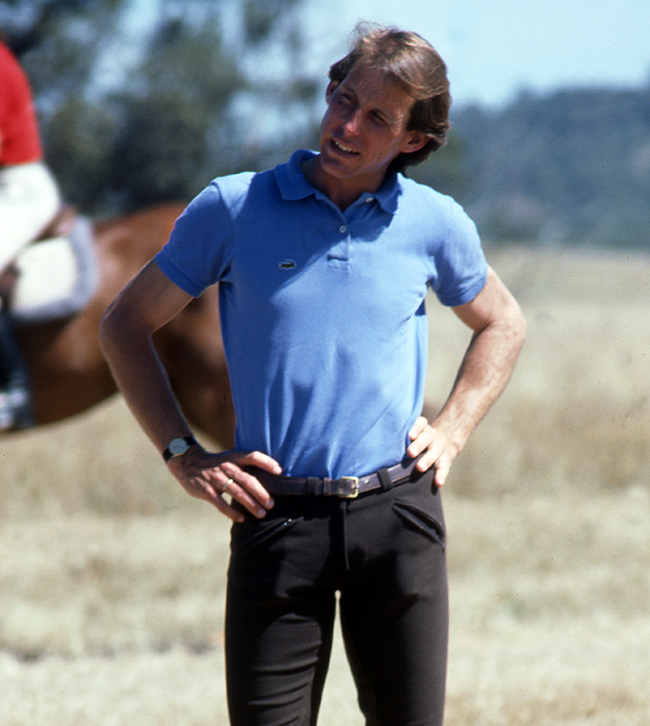
Chris Hector reports on the clinic with Tad Coffin…
Back in 1992, Christopher Hector and his wonderful Thoroughbred, Picasso (alias Fad), signed up for a lesson with Olympic Gold Medalist, Tad Coffin. Thirty years later, every word is as relevant, and as insightful, as it was back then…
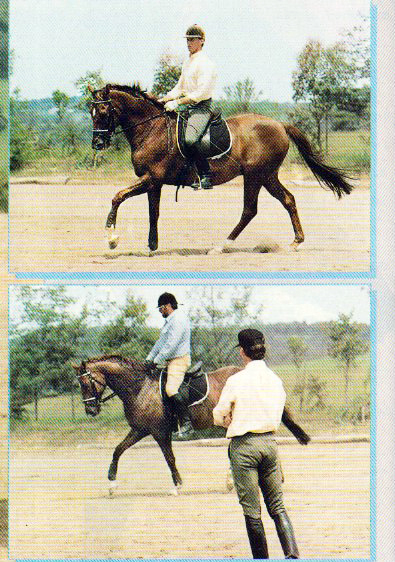
Top: Tad and Fad
Christopher and Fad in action…
and yes, folks the original pix are lost and we have to make do with awful scans…
I’m not really sure what I expected to get out of the Tad Coffin Dressage Clinic. I’d seen him work with eventing riders on a number of occasions, and each time I was astounded at the complexity of his analysis, at the awesome powers of concentration, and the attention to detail. I was also somewhat intimidated by his reputation as being a hard task master – I certainly did not relish the prospect of spending a couple of hours riding with the stirrups crossed!
But first things first, Tad’s day starts with a theory session, and once again I am overwhelmed by the eloquence of the man, as my pen scampers to keep up with the flow of ideas… the poetry of Tad’s thought.
“The great pleasure in riding, the joy in the challenge and the difficulty, is putting the horse on the aids. This morning I’d like to explore the idea of putting the horse on the aids…”
Tad is off and running…
“It is possible to work a horse up to Grand Prix standard without putting the horse on the aids, and that is a meaningless endeavour – I get more pleasure riding a horse that is on the aids in working trot. Even at the Olympic Games, the number of horses really on the bit is very small. Certainly what sets horses like Rembrandt apart is that he is on the bit, on the aids.”
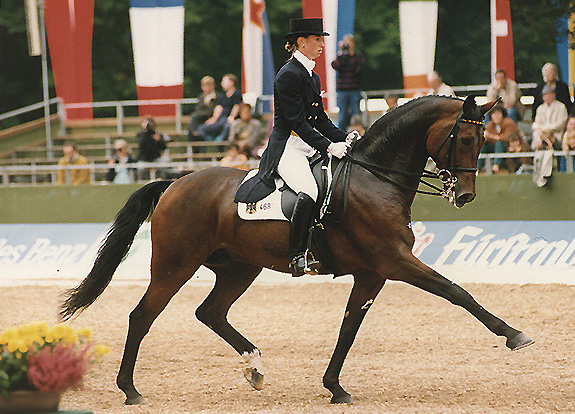
Rembrandt – on the aids…
Tad’s theme strikes chords close to my heart. It distresses me to hear people talk of the need for ‘basics’ when what they really mean is endless circles of not-very-good walk, trot and canter – in the vain hope that by dint of repetition eventually the horse will progress. Of course, the reverse is true. The horse simply gets more on its forehand, more resistant, more used to getting its own way, and progressively less athletic.
Tad explains that ‘putting a horse on the aids is not full of mystery, the average rider on the average horse can tell when it’s happened’, but he warns that as Muesler has pointed out in his Riding Logic, the whole process of riding is open to self-deception on the part of the rider.
“Muesler has a whole series of tests, that is perhaps the greatest contribution of the book, and I suggest you study it.”
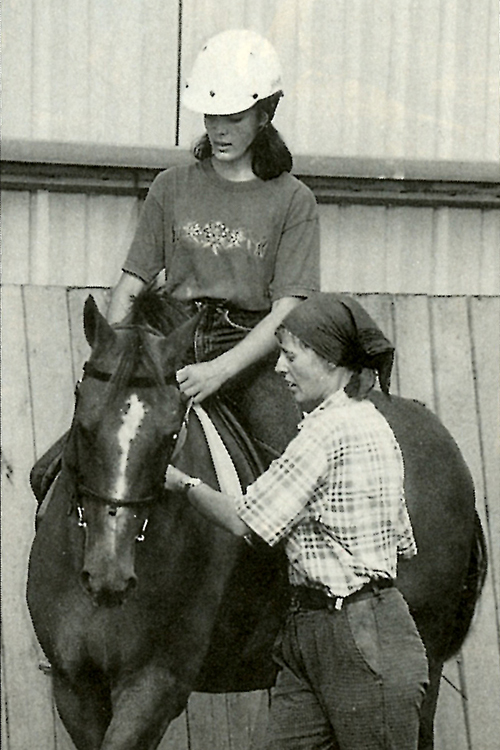
Mary Wanless – she poses the questions
Tad also recommends Mary Wanless: “She poses questions that riders can continually go back to, her book de-mystifies how to sit on a horse. In very specific language she tells how to sit on a horse in a much better way than any other book I know.”
“There is an extraordinary power that comes from sitting well, Mary Wanless identifies it, and makes it available to ordinary riders.”
“With all these books, I think it is better to read one or two pages a day, to dip in and get some ideas, then go and try them, instead of trying to read all the way through and giving up. I very much like the translation of the training chapter from Harry Boldt’s big dressage book. That provides a sense of order and progression to the work, but it also recognizes that this progression is never completely a forward progression, his book helps you construct a meaningful training session. Podhajsky’s Complete Training, is very valuable, as are the two books of the German Federation, Principles of Riding and Advanced Techniques.
More follows:
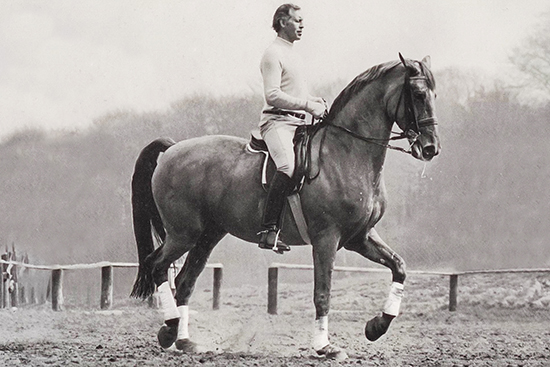
One of the many wonderful Werner Ernst photos in Harry’s Das Dressur Pferd
“Erik Herbermann’s Dressage Formula has lots of little one liners, adages and quotes. It’s a great book to apply on a day-to-day basis. I also find Albrecht’s Dressage Judges Handbook very valuable.”
From ideas about ideas, to ideas about equipment;
“The whip is the number one tool of the rider, but anything over 36 to 38 inches is very unsettling to the horse. It creates too much visual distraction, and whips that long are often unbalanced and difficult to handle. You should be willing to abandon the whip if the horse is feeling extra good. Often we come to a strange place and the horse is a bit up in the air, then it’s good to abandon the whip for five minutes and let the horse settle. A large part of putting the horse on the aids is being flexible, having an elastic mental approach.”
“When it comes to spurs, I believe that spurs should be added on special occasions to bring out brilliance. The horse should go forward because you are there. I think people tend to rely too much on spurs. And often the reaction they get is the reverse of what they want – the horse contracts instead of going forward.”
“I’ve been involved in the saddlery business for six years now. Designing saddles is an enormously frustrating business because saddle makers are not riders. The saddles present two big problems. Firstly – fit. When we put a horse on the aids, the number one consideration is how the horse uses his back. The second consideration is balance. The shape of the horse can change the effect of the saddle. On one horse, it will sit the rider right behind the pommel, on another horse the same saddle will sit the rider back. It is important not to be sliding backwards in the saddle with the cantle as a brake.”
“It’s the same with stirrup leathers. The people who put holes in leathers know nothing about riding – they punch the clock, then punch holes all day long – so again be flexible and experiment until you get exactly the right length for you. Often half a hole between the manufacturers, holes will be best for you.”
“By and large people who ride dressage tend to ride too long, and this contributes to an unsteady seat and a lack of precision.”
Tad then turned to the controversial topic of leg yielding:
“Leg yielding is an exercise I use a lot, but it is not viewed by everyone in the same way. There are different types of leg yielding. One way is where the horse is put on an angle to the line of movement, for example, with his head into the wall, or haunches into the wall. This exercise is very like shoulder-in except the horse is straight and crossing both legs – this exercise is also done on the circle.”
“The other sort of leg yielding is when you go sideways from line to line, for example leg yielding across the diagonal, and I use this sort of leg yielding a great deal, while I use the first sort of leg yielding very little. Line to line leg yielding is one of the most revealing of exercises to analyse the relationship between the rider’s leg and the horse – it is often interesting to watch higher level jhorses attempt line to line, and see the difficulties the exercise presents.”
Jennifer Sekreve demonstrates a correct leg yield
“I feel that line to line leg yielding can be done without a disengaging effect, line to line can be engaging, it develops the mobility of the horse’s hips and the use of the horse’s back.”
“This form of leg yielding is a test of how the horse frames himself and the quality of the contact. I find that many riders can perform leg yielding only by increasing the contact. Again, many horses will only perform this sort of leg yield if their neck and carriage gets higher. If the horse dictates the frame, then we usually find that the horse is not using his back.”
“There are some who say that teaching leg yields makes teaching a half pass difficult – absolutely not! The horse must be responsive to all the aids. It is no use drifting, falling over the shoulder, that’s not leg yielding. When the horse is leg yielding correctly, it is simultaneously obedient to the inside and outside leg and rein.”
“Any exercise can be ridden to the detriment of the horse. Shoulder-in is the best way to make a horse crooked, it is also the best way to make a horse straight. The ultimate criteria is, does the horse feel better for having done the exercise?
With this maxim ringing in our ears, we adjourned to the riding arena, and it was immediately obvious that Tad was about to show us exactly how the horse should be put on the aids. One of the horses in our clinic was already working at Prix St Georges level, but it was apparent that Tad was not satisfied that it was cleanly going on the aids, or for that matter, showing clear and well-executed simple paces. It was amazing to watch the horse alter its frame over the period of the lesson, gradually lowering its hindquarters, and developing a forward thrust and a brilliant extension that it had not been showing at first.
But while Tad is always working on improving the frame of the horse, simultaneously the rider is being bombarded with a multi-layered critique of his or her riding position, and our continued failure to be able to meet Tad’s demands occasionally reduced him to pleading most piteously for us to do as he asked. My own inability to lessen the hold on my left rein, drove him to distraction!
My session was after lunch, and as I warmed up Fad, I was aware that I was being observed. Tad’s eagle eye was upon us as he walked the 500 metres from the house, and by the time he arrived at the arena, Tad had already spotted the major problem area and was itching to get on board and see what he could do.
My horse is a bit hollow to the left, and a bit stiff to the right – so I usually start my warm up paying particular attention to bending him on the right rein. Indeed I have found quite a lot of rising trot should-in on the right rein seems to help. Tad’s solution was quite the reverse.
As he explained, when the horse is hollow to the left, it is because he is avoiding the contact of our left rein, left leg and left seat bone. Tad rode my horse not on the right rein, but on the left, getting him to fill that left side and to bend genuinely through his body rather than evading the influence by pushing to the right with his hindquarters.
When he first got on, Tad remarked that there wasn’t a hole in the leathers, as short as he would like it to be. So he just crossed the irons and took off in rising trot. And rose in the trot without the aid of the stirrups for the next fifteen minutes or so, not that you would have noticed, so effortlessly did he perform an exercise that is sheer torture for most of us.
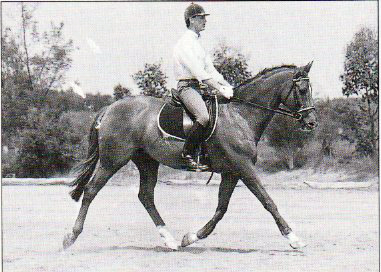
When Tad felt that he had done something towards getting my horse more genuinely on the aids, and certainly when I hopped on to try him, he felt very much more energetic and forward – and, nicer still, he felt that way the next day, and the day after when I rode him at home… Go to Part 2
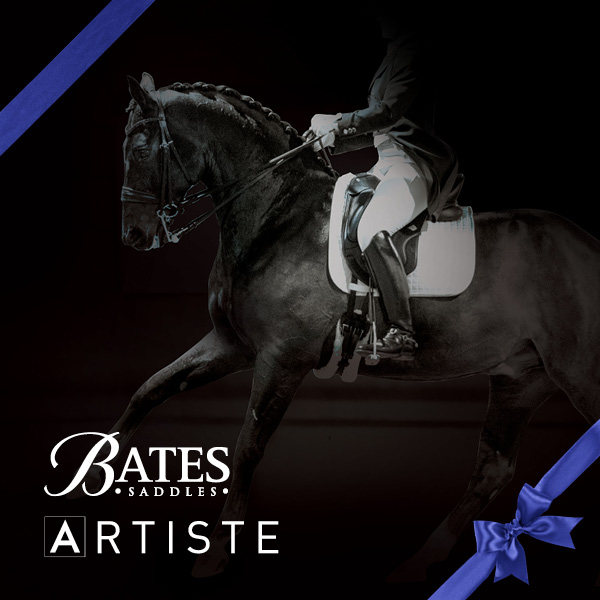



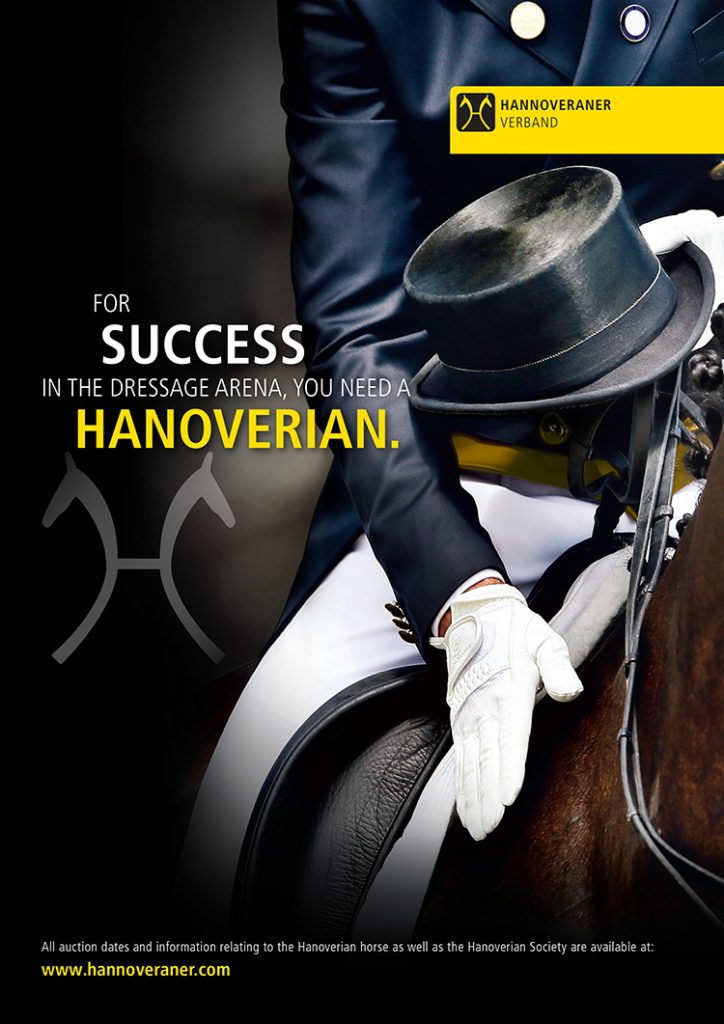
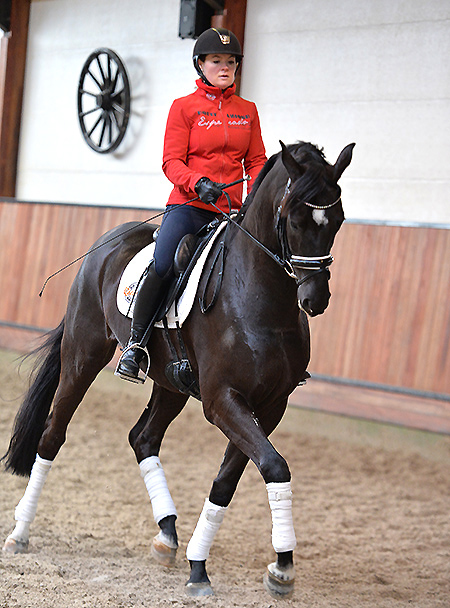
Thirty years later, Tad Coffin is still contributing to excellence in horsemanship but in a different way. He has used every bit of those years to do a deep dive into the role a saddle could and should play in the furtherance of the ultimate horse/rider relationship.
Tad remarks that Winston Churchill is credited with the quip “there’s no greater secret than that which lies between a man and his horse.” “The saddle is certainly implicated in this by virtue of its location, Tad says. “One question we might ask is, ‘Is this still a secret and if so, what have we done to investigate the answer?’ As riders, we need to think more about what a saddle does, or does not do, or potentially could do to help our horses be all they could be.”
Tad continues, “it’s not at all obvious how the downward pressure of a rider and saddle would be able to solicit an upward lift in a horse’s back. Without this, a horse’s movement, balance, agility and cooperation will always be compromised to some degree. It’s a complicated problem and the solution requires something beyond what is currently being offered. Given the current prevalence of equine back pain, there is clearly room for an alternative saddle narrative.”
The pathway to good riding should lead to the ennoblement of the horse’s innate beauty and athleticism. With this in mind Tad has fully dedicated these 30 years to studying and reengineering one of the most vital, yet overlooked, tools for an equestrian. He has conducted over 4500 experiments using feedback from a group of horses that are wholly dedicated to saddle testing.
The result of this work is SmartRide Rx technology which, with its biomechanical and bioenergetic properties, solicits the kind of response from horses that makes putting them ‘on the aids’ a joyful and therapeutic experience for both horse and rider. This effort has brought Tad full circle back to his efforts as a riding instructor, this time with a profound sense of having made the learning process more fruitful and enjoyable for all.
If you’re curious to learn more about his saddles for both jumping and dressage, or his therapy device the Thera-Tree, go to http://www.tadcoffinsaddles.com or give Tad a call with any questions at (434) 989-3229. He welcomes visitors to his base in Ruckersville, Va. by appointment.
#goodriding
#equinebackhealth
#equestrian #ridinglessons #saddles